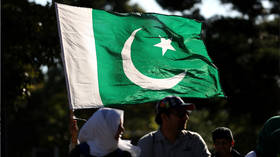Russia outmaneuvers US on gas supplies to Europe
Washington has attempted for years to diminish Russian energy influence in Europe, but the continent’s largest gas supplier continues to outmaneuver the US.
“The United States is not just exporting energy, we’re exporting freedom,” US Secretary of Energy Rick Perry said in early 2018. “We’re exporting to our allies in Europe the opportunity to truly have a choice of where do you buy your energy from. That’s freedom. And that kind of freedom is priceless…There’s no strings attached when you buy American [liquid natural gas]. So that’s world-changing.”
That comment from Perry crystalizes conventional wisdom in Washington. Europe relies on Russia for about a third of its gas needs. For years, Russia’s Gazprom was able to bind various European countries up into rigid contracts with fixed prices, often linked to higher crude oil prices. Worse, Russia tended to negotiate bilateral deals, and would offer preferential terms to friendly countries and higher prices to others. These practices raised the ire of the European Commission’s antitrust regulator, which forced Gazprom to dial back on such strong-arm tactics.
But with few alternatives, there was little prospect of fundamental change – Europe would still need Russian gas for the long haul.
The most promising alternative came from US LNG (liquefied natural gas). Cheap shale gas sparked a wave of investment earlier this decade. Cheniere Energy brought its Sabine Pass LNG facility online nearly three years ago, and several more terminals are in the works.
The mere threat of American LNG arriving in Europe arguably weakened Gazprom’s hand. Lithuania, for instance, forced Gazprom to agree to pricing concessions when it managed to bring in a floating LNG import terminal, opening up the door to imported gas from places other than Russia.
Last year, the first American LNG cargo arrived in Lithuania. “US gas imports to Lithuania and other European countries is a game changer in the European gas market. This is an opportunity for Europe to end its addiction to Russian gas and ensure a secure, competitive and diversified supply,” Lithuanian President Dalia Grybauskaite wrote to Foreign Affairs at the time.
However, things have not changed as much as some had hoped. Russia’s market share in Europe is little changed. This has occurred for several reasons. First, very few US LNG cargos have actually arrived in Europe. Second, Russia is not sitting by watching its position erode. Instead, it has expanded its own use of LNG and it has also redoubled its efforts at locking European buyers into gas via pipelines.
Moreover, as Russia faces some challenges in Europe, it has also pivoted to Asia to diversify its markets. China is the world’s fastest growing gas market, and China is one of the biggest reasons why global LNG prices have rebounded much quicker than analysts anticipated. Russia would be foolish not to focus gas sales on China. The two countries are set to open a long distance pipeline by the end of next year that will move more Russian gas into China. Russia’s LNG shipments to India are also picking up.
Also on rt.com First LNG shipment from Russia's Arctic to arrive in Northern EuropeIt’s a two-prong strategy that has proven successful to date. “Our main goal is to preserve our current markets, primarily Europe, and to gain a foothold in new ones, especially Asia,” Alexey Teksler, Russia’s first deputy Minister of Energy, told the Wall Street Journal. Over time, China is set to take on much greater importance for Gazprom.
While Rick Perry wants to export more freedom, the US-China trade war has resulted in Chinese tariffs on American LNG. That will make US gas much less competitive in China relative to other sources of gas, such as from Russia.
It is not as though US LNG has not had any impact at all. The pricing concessions offered by Gazprom, and the increasing shift towards more market-based pricing for Gazprom in Europe (as opposed to rigid contracts), is arguably the largest achievement that American LNG has secured. According to the WSJ, Gazprom’s average selling price fell by nearly 50 percent since 2013, although much of that is also the result of falling crude oil prices. Competition from the US, as well as antitrust scrutiny from Brussels, means that Gazprom cannot demand exorbitant prices.
But other than that, US LNG has not done much else to beat back Russia in the European market.
Also on rt.com This landmark LNG deal will change energy geopolitics foreverAlso, Russia can still offer cheaper gas than US suppliers in many places. Gazprom may have had to lower prices to Europe to keep US LNG out, but it can easily undercut American exporters. Even in India, Gazprom inked a 20-year agreement for gas at $7/MMBtu, which the WSJ says is about $1 to $1.50/MMBtu cheaper than anything coming from Qatar or the US.
Weakening Russia’s energy grip over Europe has been a perennial goal of US administrations dating back decades. But Russia continues to adapt and outmaneuver Washington.
This article was originally published on Oilprice.com















